
There is no more enjoyable smart telescope than the Vaonis Vespera II (also called the Vaonis Vespera 2), making it easily one of the best telescopes for astrophotography for beginners and advanced amateurs wanting to both cut down on hassle and save time. Affordable smart telescopes are all the rage – check our ZWO Seestar S50 review for proof of that – and the Vaonis Vespera II just about sneeks into that category. It is, however, a class above its more affordable rival, offering a superior build quality, much higher resolution images and a slick app called Singularity.
With a longer focal length, upgraded focal ratio and a wider field of view than its predecessor, the Vaonis Vespera II is easy to use and lightweight enough to travel with. Is it the best smart telescope in 2024? For some users, it absolutely will be – but there are things you need to know before making a decision. Here’s everything you need to know about the Vaonis Vespera II.

Vaonis Vespera II: Specifications
Vaonis Vespera II: Price
At $1,690 / £1,398, the Vespera II largely retains the price tag of its previous iteration, the Vespera. This makes it a mid-range smart telescope. It costs considerably more than the ZWO Seestar—albeit with more advanced features and a higher resolution—yet significantly less than the Unistellar eVscope 2, Unistellar eVscope eQuinox 2, the latest Odyssey and Odyssey Pro, or the upcoming Celestron Origin.
Optional accessories include a mini tripod ($99/£90), a larger adjustable tripod ($149/£135), a backpack ($149/£159), a hygrometer sensor ($99/£109) for dealing with fog, a light pollution filter ($199/£209), a dual-band filter ($399/£370) and a solar filter ($99/£129).
Vaonis Vespera II: Design & Handling
At just under 11lbs/5kg, Vespera II is reasonably easy to carry, whether by hand or in a backpack. An immediately pleasing change from the original Vespera is the swapping-put of a proprietary charger for a USB-C slot, making it much easier to charge on the go. It also makes it easy to hook up a portable battery to keep it going for long observing sessions, which helps overcome the limitations of its (albeit upgraded) built-in battery, which lasts about four hours.
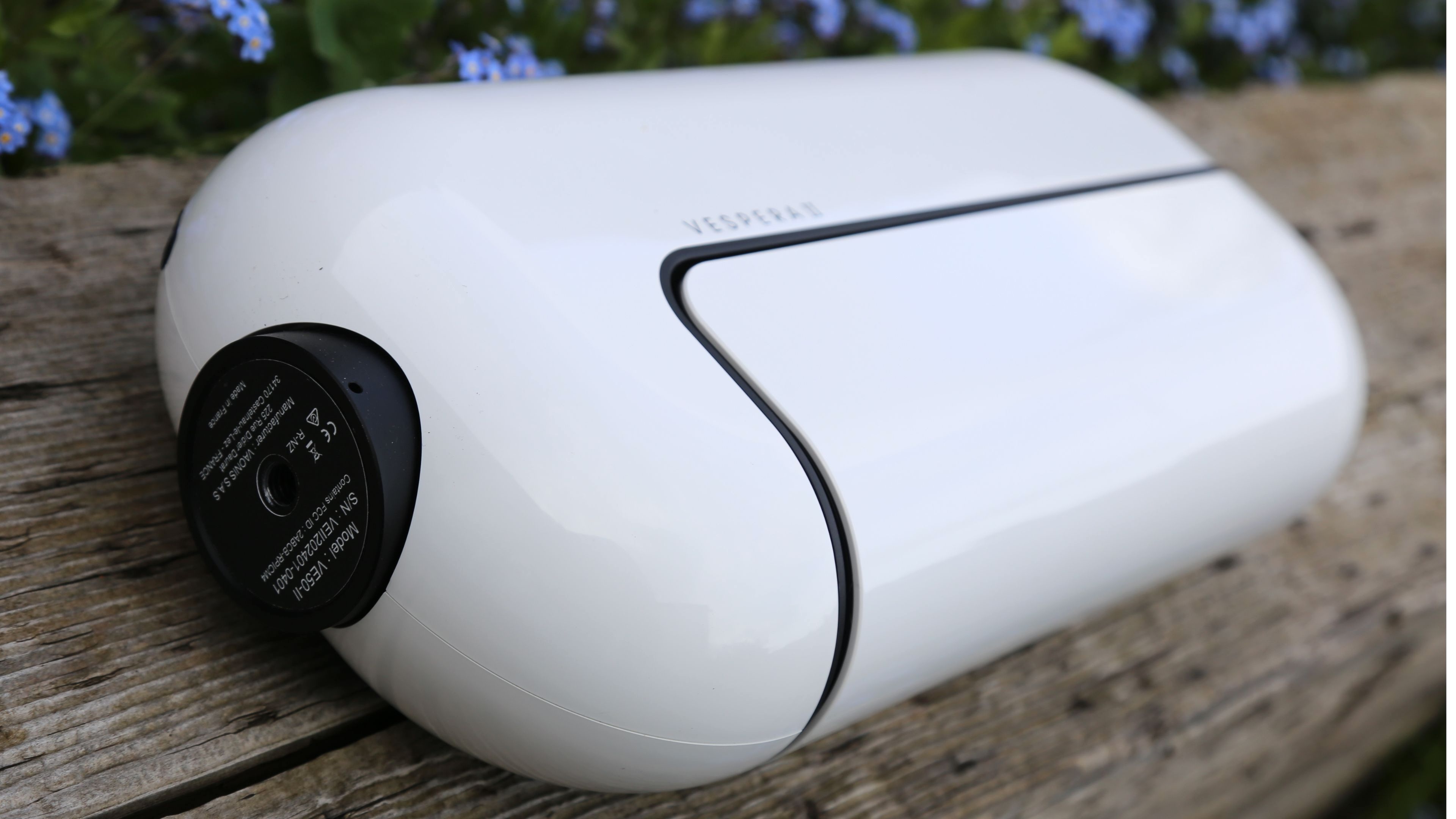
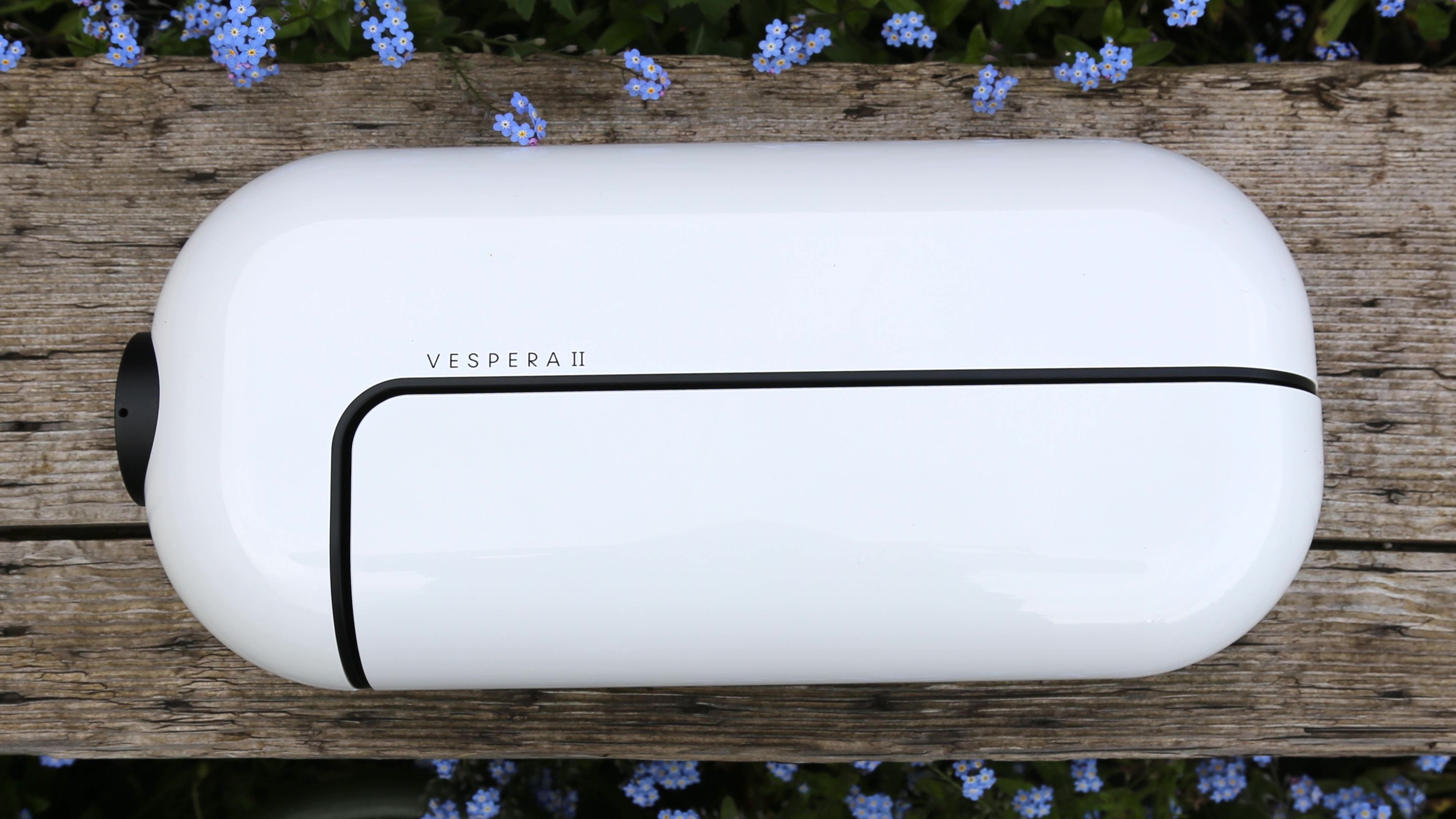
Vespera II’s underbelly contains a standard tripod thread, so you can use it with whatever large photographic tripod you already own. You can buy two types of tripods for the Vespera II, and while both are pack-down to a relatively small size, they don’t lift the telescope too high.
The curved lines of the Vespera II’s chassis lend it an Apple-esque look. It also handles incredibly well. When ‘parked,’ the Vespera II retains an oval shape, which is easy to store in any small backpack. Position it level on the ground (it’s really important to keep it completely level) on a tripod, and the motorized telescope tube quietly reveals itself and begins to check for stars to align with.
Vaonis Vespera II: Performance
The major upgrade on the Vespera II is its image sensor. While its forebear managed just two-megapixel images, this iteration’s Sony IMX585 sensor ups detail to eight megapixels. To see the results, it’s necessary to attach a smartphone to the Vespera II’s WiFi network via the Singularity network. With its star pattern recognition software in full swing, it aligns with the night sky, and the app presents choices for what to observe.
Once it’s slowed to that object and focused upon it, it takes 10-second images of it and live-stacks them, removing noise and increasing brightness and color. We tried it with the Black Eye, Pinwheel, and Cigar galaxies, achieving excellent results within minutes.
However, teasing-put the intricate dust lanes and other details can take over an hour of observing (though it’s easy enough just to leave it running while you do something else). Open clusters and globular clusters take just minutes to max out. Meanwhile, the moon proved a hugely enjoyable target to explore – a definite improvement on the original Vespera. Images are saved to the telescope’s 25GB hard disk.
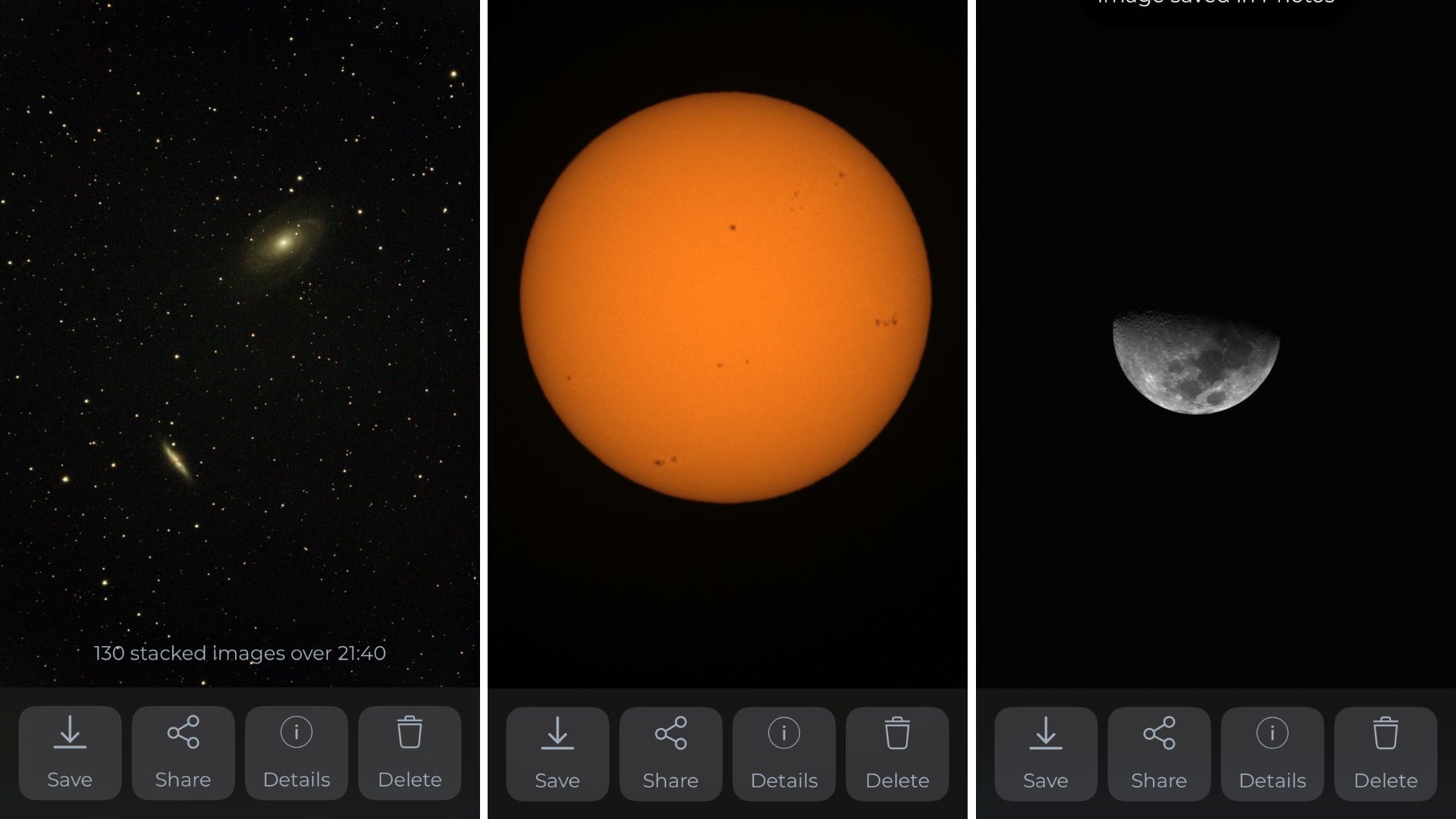
The eight-megapixel images aren’t Hubble-standard, of course, though few will choose to export the results as lossless TIFF and FITS files for post-processing. There’s also a new CovalENS ‘live mosaic capture’ that can capture large objects—such as the Andromeda galaxy and the Pleiades—by stitching together four separate images. Unfortunately, we weren’t able to test this feature.
One accessory worth investing in is the solar filter. Simple to click into place, all you have to do is select the sun on the Singularity app, and the telescope unfolds to 45 degrees before requesting the solar filter. It then slews to, and autofocuses on, the sun in seconds. Now is a great time to study the sun, whose surface is regularly covered in sunspots because of its heightened magnetic activity (solar maximum). Vespera II captured some excellent solar images showing plenty of sunspots.
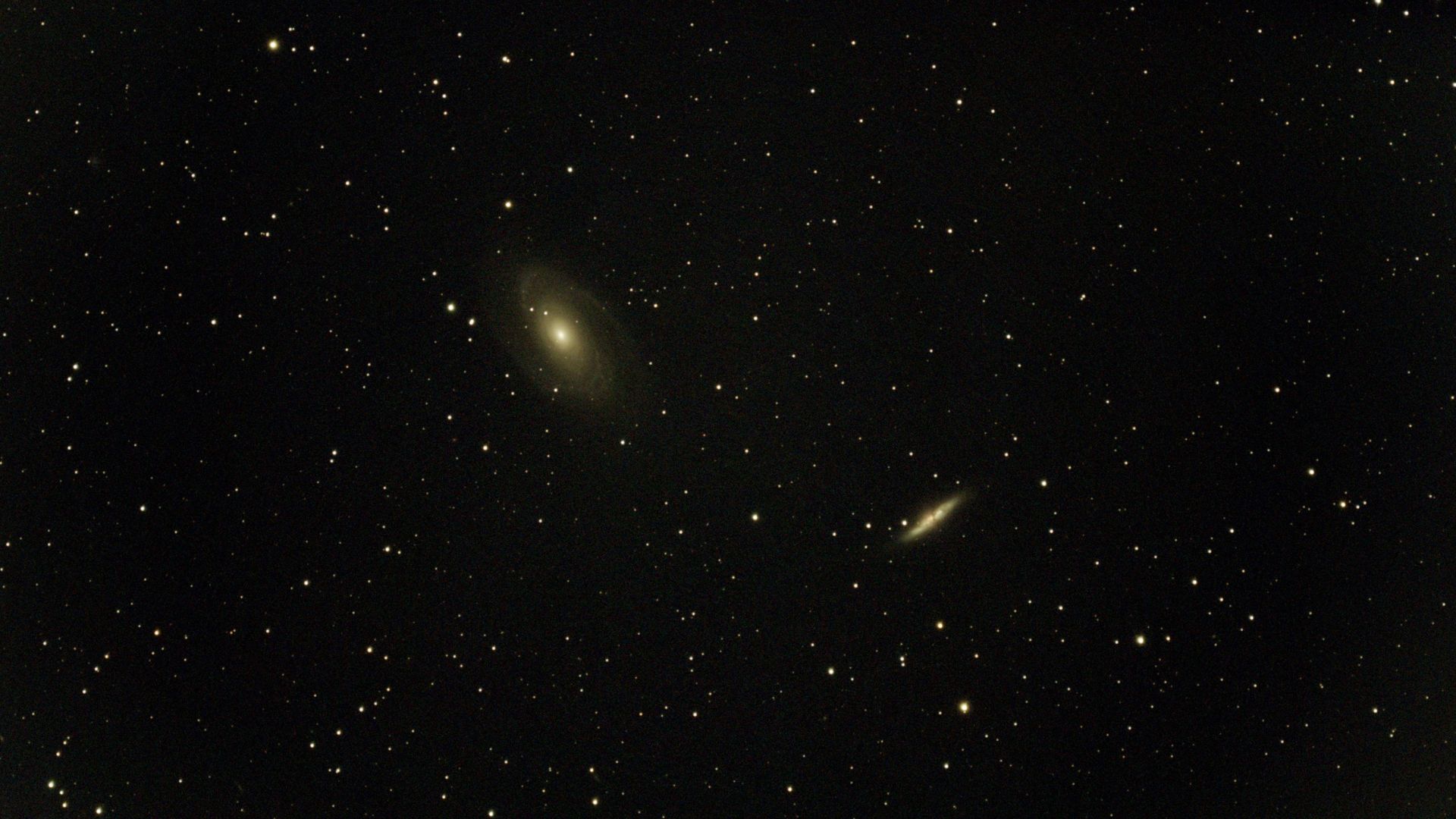
Vaonis Vespera II: Verdict
If you’re looking for a smart telescope you can operate using your smartphone in a light-polluted city, stop looking. The perfect bridge product between the very affordable yet limited ZWO Seestar S50 and very pricey products from Unistellar and Celestron, the Vespera II offers impressive images of galaxies, nebulae, and star clusters that are surprisingly bright and colorful even when used in badly light-polluted skies.
Quick to set up, easy to use, and with an app that adds to the simplicity, Vespera II is nevertheless a serious piece of astronomy observation hardware that will appeal just as much to the experienced amateur astronomer and astrophotographer looking to save time and make use of brief breaks in the weather as it will to beginners after something intuitive and easy to use.
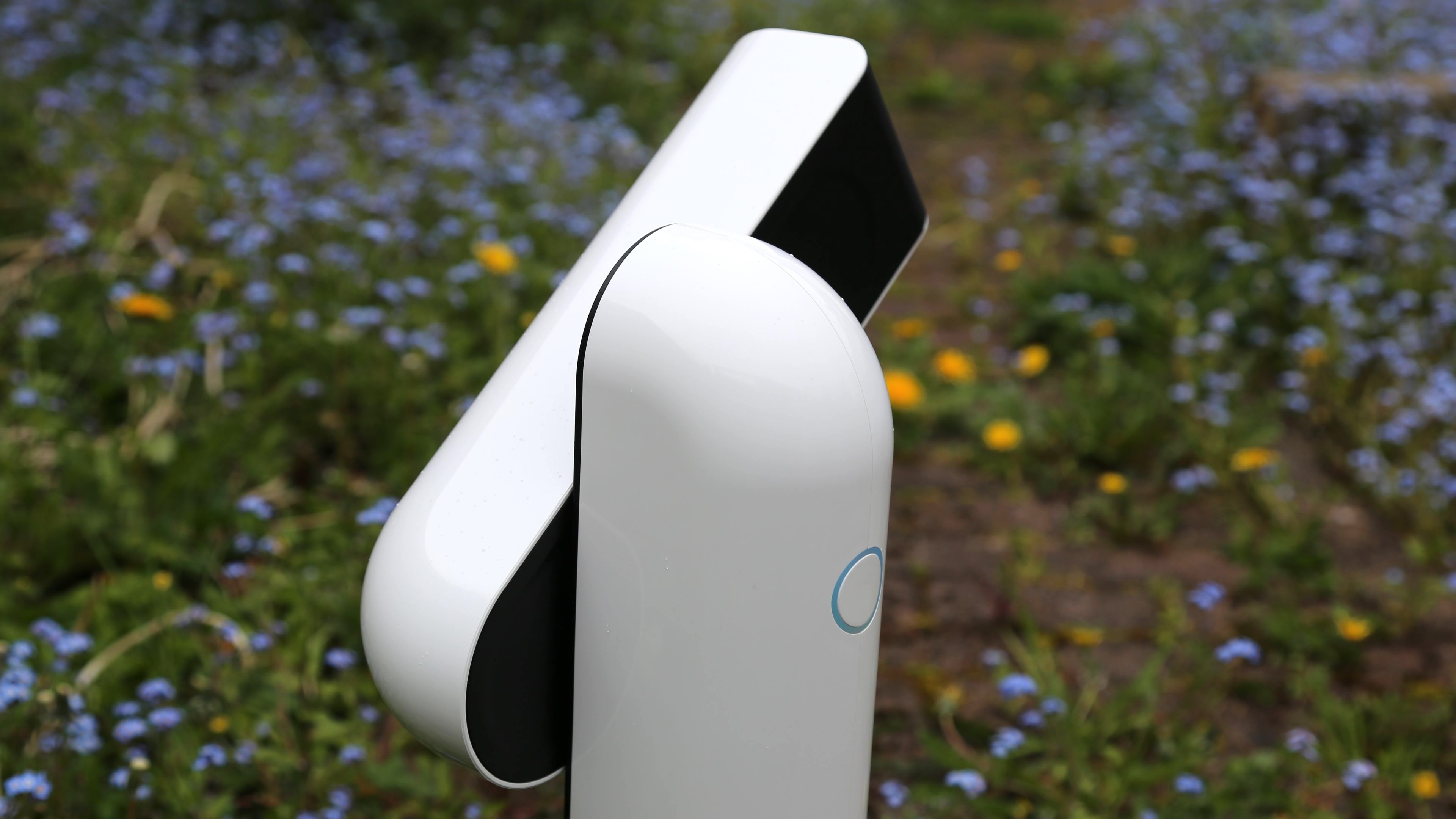
✅ Buy this if...
- It’s adept at dealing with light pollution.
- It takes superb images of the moon and the sun.
🚫 Don't buy this if...
- It can’t capture planets in any kind of detail.
- A more expensive, higher resolution model – Vespera Pro – is due in 2024.







